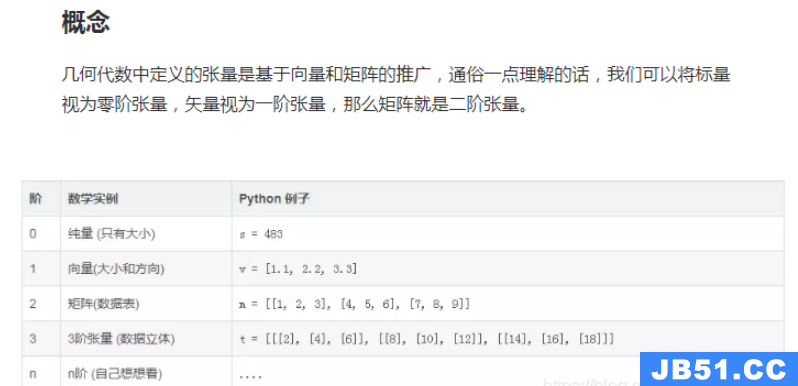损失函数除了作为模型训练时候的优化目标,也能够作为模型好坏的一种评价指标。但通常人们还会从其它角度评估模型的好坏。
这就是评估指标。通常损失函数都可以作为评估指标,如MAE,MSE,CategoricalCrossentropy等也是常用的评估指标。
但评估指标不一定可以作为损失函数,例如AUC,Accuracy,Precision。因为评估指标不要求连续可导,而损失函数通常要求连续可导。
编译模型时,可以通过列表形式指定多个评估指标。
如果有需要,也可以自定义评估指标。
自定义评估指标需要接收两个张量y_true,y_pred作为输入参数,并输出一个标量作为评估值。
也可以对tf.keras.metrics.Metric进行子类化,重写初始化方法,update_state方法,result方法实现评估指标的计算逻辑,从而得到评估指标的类的实现形式。
由于训练的过程通常是分批次训练的,而评估指标要跑完一个epoch才能够得到整体的指标结果。因此,类形式的评估指标更为常见。即需要编写初始化方法以创建与计算指标结果相关的一些中间变量,编写update_state方法在每个batch后更新相关中间变量的状态,编写result方法输出最终指标结果。
如果编写函数形式的评估指标,则只能取epoch中各个batch计算的评估指标结果的平均值作为整个epoch上的评估指标结果,这个结果通常会偏离拿整个epoch数据一次计算的结果。
一,常用的内置评估指标
-
MeanSquaredError(平方差误差,用于回归,可以简写为MSE,函数形式为mse)
-
MeanAbsoluteError (绝对值误差,用于回归,可以简写为MAE,函数形式为mae)
-
MeanAbsolutePercentageError (平均百分比误差,用于回归,可以简写为MAPE,函数形式为mape)
-
RootMeanSquaredError (均方根误差,用于回归)
-
Accuracy (准确率,用于分类,可以用字符串"Accuracy"表示,Accuracy=(TP+TN)/(TP+TN+FP+FN),要求y_true和y_pred都为类别序号编码)
-
Precision (精确率,用于二分类,Precision = TP/(TP+FP))
-
Recall (召回率,用于二分类,Recall = TP/(TP+FN))
-
TruePositives (真正例,用于二分类)
-
TrueNegatives (真负例,用于二分类)
-
FalsePositives (假正例,用于二分类)
-
FalseNegatives (假负例,用于二分类)
-
AUC(ROC曲线(TPR vs FPR)下的面积,用于二分类,直观解释为随机抽取一个正样本和一个负样本,正样本的预测值大于负样本的概率)
-
CategoricalAccuracy(分类准确率,与Accuracy含义相同,要求y_true(label)为onehot编码形式)
-
SparseCategoricalAccuracy (稀疏分类准确率,与Accuracy含义相同,要求y_true(label)为序号编码形式)
-
MeanIoU (Intersection-Over-Union,常用于图像分割)
-
TopKCategoricalAccuracy (多分类TopK准确率,要求y_true(label)为onehot编码形式)
-
SparseTopKCategoricalAccuracy (稀疏多分类TopK准确率,要求y_true(label)为序号编码形式)
-
Mean (平均值)
-
Sum (求和)
二, 自定义评估指标
我们以金融风控领域常用的KS指标为例,示范自定义评估指标。
KS指标适合二分类问题,其计算方式为 KS=max(TPR-FPR).
其中TPR=TP/(TP+FN),FPR = FP/(FP+TN)
TPR曲线实际上就是正样本的累积分布曲线(CDF),FPR曲线实际上就是负样本的累积分布曲线(CDF)。
KS指标就是正样本和负样本累积分布曲线差值的最大值。
import numpy as np import pandas as pd tensorflow as tf from tensorflow.keras layers,models,losses,metrics # 函数形式的自定义评估指标 @tf.function def ks(y_true,y_pred): y_true = tf.reshape(y_true,(-1,)) y_pred = tf.reshape(y_pred,)) length = tf.shape(y_true)[0] t = tf.math.top_k(y_pred,k = length,sorted = False) y_pred_sorted = tf.gather(y_pred,t.indices) y_true_sorted = tf.gather(y_true,t.indices) cum_positive_ratio = tf.truediv( tf.cumsum(y_true_sorted),tf.reduce_sum(y_true_sorted)) cum_negative_ratio = tf.truediv( tf.cumsum(1 - y_true_sorted),tf.reduce_sum(1 - y_true_sorted)) ks_value = tf.reduce_max(tf.abs(cum_positive_ratio - cum_negative_ratio)) return ks_value y_true = tf.constant([[1],[1],[0],[1],[0]]) y_pred = tf.constant([[0.6],[0.1],[0.4],[0.5],[0.7],[0.7]]) tf.print(ks(y_true,y_pred))
0.625
类形式的自定义评估指标 class KS(metrics.Metric): def __init__(self,name = "ks",**kwargs): super(KS,self).__init__(name=name,1)">kwargs) self.true_positives = self.add_weight( name = tpzeros") self.false_positives =fp) @tf.function update_state(self,y_true,y_pred): y_true = tf.cast(tf.reshape(y_true,)),tf.bool) y_pred = tf.cast(100*tf.reshape(y_pred,tf.int32) for i in tf.range(0,tf.shape(y_true)[0]): if y_true[i]: self.true_positives[y_pred[i]].assign( self.true_positives[y_pred[i]]+1.0) else: self.false_positives[y_pred[i]].assign( self.false_positives[y_pred[i]]+1.0) (self.true_positives,self.false_positives) @tf.function result(self): cum_positive_ratio = tf.truediv( tf.cumsum(self.true_positives),tf.reduce_sum(self.true_positives)) cum_negative_ratio = tf.truediv( tf.cumsum(self.false_positives),tf.reduce_sum(self.false_positives)) ks_value = tf.reduce_max(tf.abs(cum_positive_ratio - cum_negative_ratio)) ks_value y_true = tf.constant([[1],[0.7],1)">]]) myks = KS() myks.update_state(y_true,y_pred) tf.print(myks.result())
0.625
参考:
开源电子书地址:https://lyhue1991.github.io/eat_tensorflow2_in_30_days/
GitHub 项目地址:https://github.com/lyhue1991/eat_tensorflow2_in_30_days

